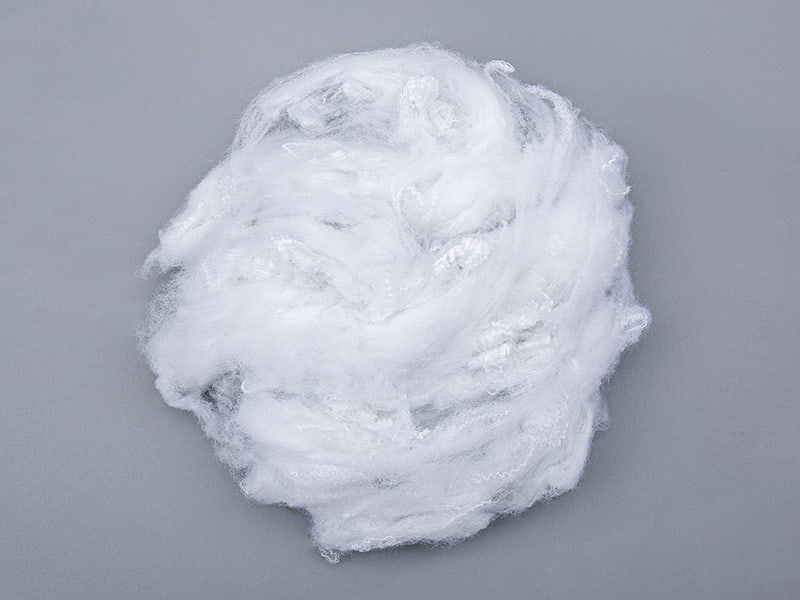 2025.06.19
2025.06.19
 Industry Information
Industry Information
Nonwovens for geotextile segmentsTransfers excellent performance advantages in geotechnical applications thanks to its three-dimensional network structure and adjustable pore characteristics. Compared with traditional woven geotextiles, nonwovens have a more uniform porosity and higher porosity, which enables more precise filtration control. This unique structural feature allows it to allow water to pass efficiently while keeping the soil stable, perfectly balancing the dual needs of filtration and drainage.
The development of materials science has enabled modern nonwovens for geotextile segments to accurately design for different engineering needs. By adjusting the fiber type, web structure and consolidation process, engineers can obtain a variety of performance combinations from ultra-fine filtration to efficient drainage. This customization capability enables nonwovens to adapt to a variety of complex application scenarios from highways to water conservancy projects.

In terms of filtration performance, nonwovens for geotextile segments has achieved revolutionary progress through precisely controlled aperture distribution. Modern production processes can produce nonwovens with gradient pore structures that can effectively prevent the loss of soil particles while maintaining long-term and stable penetration performance. Compared with traditional particulate filter materials, nonwovens show obvious advantages in preventing silt, greatly extending the service life of the project.
Chemical modification of the material surface further enhances the filtration efficiency of nonwovens for geotextile segments. By introducing special surface treatment techniques, these materials can obtain antistatic, oleophobic or hydrophilic properties, allowing them to adapt to a variety of complex soil environments. In special applications such as contaminated soil repair, functional nonwovens can even actively adsorb specific pollutants, achieving the dual purpose of environmental restoration and engineering protection.
Nonwovens for geotextile segmentsBreakthroughs in drainage performance are also impressive. The innovative three-dimensional structural design allows these materials to achieve efficient water conduction simultaneously in both plane and thickness, which is difficult for traditional drainage materials. Through special fiber arrangement and layered structure, modern nonwoven geotextiles can form continuous water conduction channels, maintaining stable drainage capacity even under high pressure conditions.
Precise control of material thickness is a key factor in improving drainage performance. Modern production processes can produce a variety of *nonwovens for geotextile segments from ultra-thin to ultra-thick, meeting different drainage needs. In situations where high flow drainage is required, multi-layer composite structure nonwovens can provide unprecedented drainage efficiency while maintaining excellent mechanical strength and dimensional stability.
Long-term performance stability is the core competitiveness of nonwovens for geotextile segments. The new generation of materials has greatly improved their service life in harsh environments through special anti-aging formulas and structural design. The rational use of additives such as ultraviolet stabilizers and antioxidants allows these materials to withstand long-term outdoor exposure without performance degradation. In acid-base soils or high salinity environments, specially formulated nonwovens also exhibit excellent tolerance.
Temperature adaptability is another important breakthrough. Modern nonwovens for geotextile segments can maintain stable performance under extreme temperature conditions and can work reliably from permafrost to tropical areas. This wide environmental adaptability greatly expands the application range of nonwoven geotextiles, making them truly globally applicable engineering materials.
Environmental performance is an important development direction for modern nonwovens for geotextile segments. More and more manufacturers are starting to produce geotechnical nonwovens using recycled polyester or bio-based materials, significantly reducing the product's carbon footprint. In terms of production processes, energy-saving and efficient spunbond, meltblown and other technologies reduce energy consumption and waste generation, making the entire life cycle more environmentally friendly.
The research and development of biodegradable nonwovens provides environmentally friendly solutions for temporary engineering applications. These materials remain strong enough during use and can naturally degrade after completing their mission, avoiding long-term impacts on the environment. Life cycle assessment studies show that the environmental impact of optimized designs is much lower than that of traditional geomaterials throughout the use cycle.
Intelligence is the forefront of the development of nonwovens for geotextile segments. Nonwoven fabrics embedded with sensing fibers can monitor soil moisture, pressure and other parameters in real time, providing data support for engineering management. This smart material transforms passive protection into active monitoring, greatly improving engineering safety and management efficiency.
Research on responsive materials opens up new possibilities. Nonwovens for geotextile segments that can automatically adjust pore structures according to changes in ambient humidity or stress are making breakthroughs in the laboratory stage. Such materials are expected to achieve truly adaptive filtration and drainage, providing innovative solutions for special engineering applications.